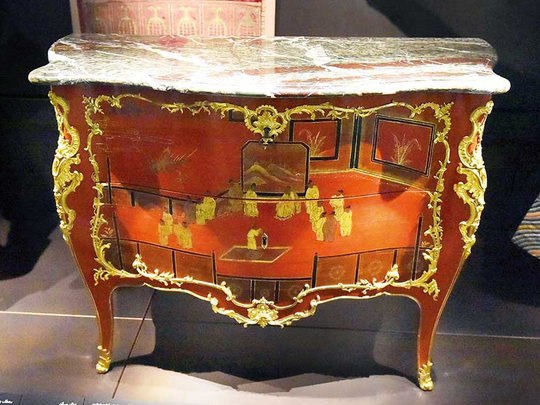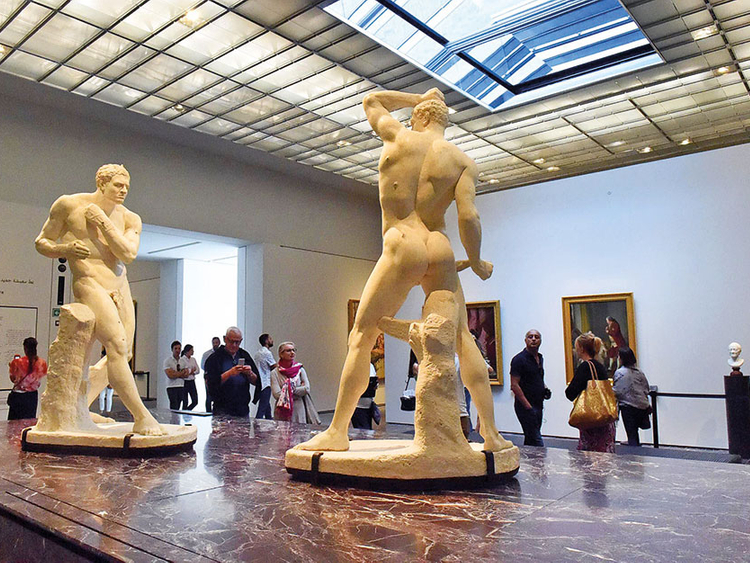
Abu Dhabi: The chronological journey of humankind is immediately obvious as you step into this gallery, especially when you see the colossal painting of French statesman and military leader, Napoleon Bonaparte.
Larger segments of society had begun to enjoy greater affluence and prosperity in the 18th century, and this is traced in the collection of artefacts on display in the gallery, titled A New Art of Living.
A red-lacquered commode imported to France from China shows the increasing focus on the beauty and comfort of private residences, and the background contains a velvet cushion cover produced in the Ottoman Empire. At the same time, greater attention was paid to enhance the luxuriousness and splendour of garments, represented by a silk court robe worked through with gold threads, and a silken set of French coat, waistcoat and breeches.
While the painting of Bonaparte crossing the Alps in May 1800 holds the pride of place, one cannot miss the dignified presence exuded by a 1922 portrait of the first American president, George Washington.
Off the main space, a dim room encases a number of paper-based artworks. If you don’t look closely, you’ll regret missing out on the 1648 series of prints by Dutch master printmaker and painter, Rembrandt van Rijn, or on the 1895 Turkish calligraphy enumerating the attributes of Prophet Mohammad (peace be upon him) by Ottoman statesman and expert calligrapher, Kazasker Mustafa Izzet Efendi. A pair of sumptuous screens painted in 1650 Japan also typify ‘Whose Sleeves’ art, which invites the viewer to think about the possible ownership of the painted garments.
A towering pair of plaster statues in the gallery depicts an ancient fight, created by Italian sculptor Antonio Canova between the late 18th and early 19th centuries, and the work is said to encapsulate the spirt of heroism and victory that dominated this particular period of human development.
Timings and entry fee: 10am-8pm on Saturday, Sunday, Tuesday, Wednesday; 10am-10pm on Thursday and Friday
Dh60: Adults
Dh30: 13-22 years
Dh30: Education professionals
Free entry: Children under 13. Members of Louvre Abu Dhabi’s Art Club loyalty programme, journalists, visitors with specials needs and their companions
Next: Cosmography











